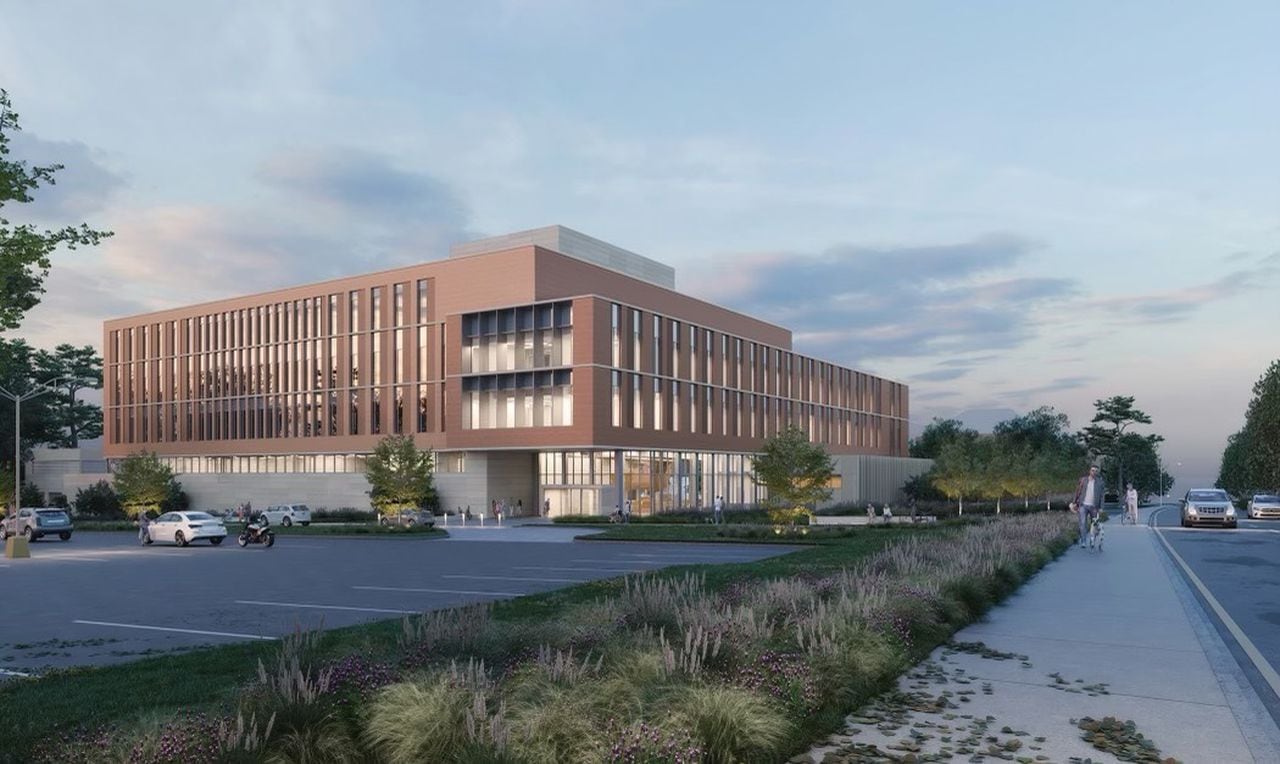State officials hope $200 million South Alabama medical school perks up rural health care
As hospitals in Alabama continue to shutter facilities, state and education officials in South Alabama expressed hope on Friday that the future addition of a new building at one of the state’s two medical schools can provide a boost.
“A lot of students come from a rural community and want to go back but don’t have an opportunity to go to a medical school,” said Jo Bonner, president at the University of Alabama during a groundbreaking ceremony for a new 250,000-square-foot medical school building in Mobile.
“As rural hospitals face closures and other threats … we are working to correct that situation, said Bonner, the former congressman for South Alabama and chief of staff to Gov. Kay Ivey. “You’re going to need more doctors. Currently, we have 80 students per class. This new building allows us to go up to 100 and to 125.”
He added, “We’ll be able to accept more students and providing more (medical) providers. No medical school does more to put students into rural communities than South Alabama.”
Combatting shortages
Indeed, that is the hope for Alabama’s medical needs as closures continue to mount and rural hospitals struggle. Three hospital birthing units shuttered this fall, leaving mothers with few options in smaller counties where a drive to the nearest OB-GYN could be up to 100 miles.
It’s a concern nationwide as rising costs and staff shortages have forced rural hospitals across the country to shutter labor and delivery units, leading to what is called maternity care deserts, or counties without a hospital or birth center offering OB-GYN care and without any obstetric providers.
By 2034, according to the Association of American Medical Colleges, the demand for primary and specialty care physicians will exceed supply by a range of 37,800 to 124,000 physicians.
Officials hope the medical students educated at the 50-year-old medical school at USA will practice in small towns and underserved areas in Alabama. The school is on the right track for keeping students within the state: Of those new physicians who have graduated from the Mobile-based medical school over the years, 90% decided to remain in Alabama.
“That’s a statistic I like to see, folks,” said Ivey. “The smallest of communities and biggest of cities, Alabama needs its medical and nursing students to stay here.”
Public project
A rendering of the new medical school facility on the campus of the University of South Alabama. The Mobile City Council agreed to allocate $10 million over ten years to the construction of the new facility. (Rendering courtesy University of South Alabama)
The public is paying a significant chunk for the new school building and equipment, estimated to cost around $200 million.
Approximately $110 million comes from federal and state sources. Ivey announced the $50 million in state support for the project in late 2020, with $60 million secured by now-retired U.S. Senator Richard Shelby. The City of Mobile, in October, approved $10 million over the next 10 years to support the construction of the new building. The money comes from the city’s General Fund revenues earmarked for economic development incentives. The Mobile County Commission also pledge $5 million.
The USA Foundation also contributed $30 million.
Bonner has said the university is borrowing $30 million to cover some of the construction costs. He has also said there are additional private donors to the project.
“This is an investment in the future of healthcare to meet the needs of Alabamians,” said Dr. John Marymont, dean of the Frederick P. Whiddon College of Medicine and vice-president for medical affairs.
The new College of Medicine building will provide state-of-the-art laboratory spaces that will create flexibility and efficiency for research. It will allow for expanding the class size of first-year medical students from 80 to 100, with the capability of going even higher to 125.
“By national metrics, this medical school produces high-quality physicians that stay in the state, helping meet the needs in primary care as well as in the rural and underserved areas at an affordable cost,” he said.
The new medical school building will be completed by 2026, and it will replace the existing building that was constructed in the 1970s and is considered outdated. The existing building will be torn down once the new medical school building is constructed, Bonner said.
“While construction for the Whiddon College will take just three years, the impact of our state and nation will continue for many decades to come,” said Arlene Mitchell, chairwoman pro-tempore of the USA Board of Trustees. “We need more doctors, and we need more doctors in the future.”
